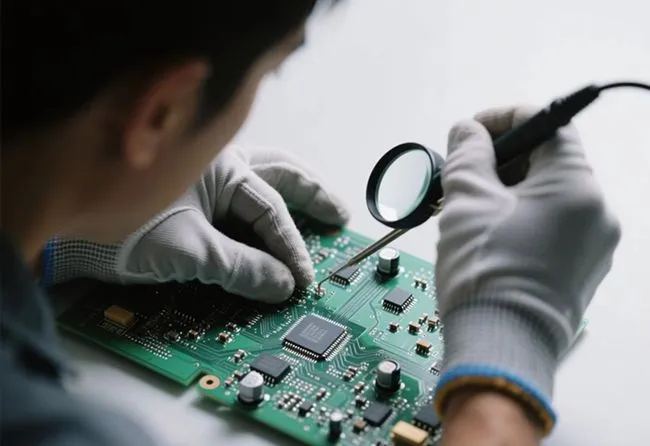The Role of Fast PCB Prototyping in Modern Product Development
In today's fast-paced technological landscape, rapid innovation is crucial for staying competitive. Fast PCB prototyping has emerged as a game-changer in the product development process, offering numerous advantages that propel projects from concept to market at unprecedented speeds.
One of the primary benefits of fast PCB prototyping is the ability to quickly validate design concepts. Engineers can transform their ideas into tangible prototypes within days, sometimes even hours, allowing for immediate testing and evaluation. This rapid turnaround time enables teams to identify and address potential issues early in the development cycle, significantly reducing the risk of costly mistakes during mass production.
Accelerating Design Iterations
Fast PCB prototyping facilitates rapid design iterations, a critical aspect of product refinement. With traditional methods, each design change could take weeks to implement and test. However, advanced prototyping techniques allow for multiple iterations to be produced and evaluated in a fraction of the time. This accelerated process enables engineers to experiment with different layouts, component placements, and circuit designs, ultimately leading to more optimized and efficient final products.
Moreover, the ability to quickly produce physical prototypes enhances collaboration among team members. Designers, engineers, and stakeholders can physically interact with the prototypes, fostering better communication and understanding of the product's functionality and potential improvements. This hands-on approach often leads to innovative solutions and refinements that might not have been apparent in digital simulations alone.
Cost-Effective Risk Management
Fast PCB prototyping serves as an effective risk management tool in product development. By allowing companies to test and validate designs before committing to large-scale production, it significantly reduces the financial risks associated with bringing new products to market. Potential issues can be identified and resolved early, minimizing the likelihood of costly recalls or redesigns after product launch.
Additionally, this rapid prototyping approach enables companies to be more responsive to market demands and technological advancements. As new components or technologies become available, fast PCB prototyping allows for quick integration and testing, ensuring that products remain cutting-edge throughout the development process.
Advanced Technologies Driving Fast PCB Prototyping
The realm of fast PCB prototyping has been revolutionized by a suite of advanced technologies that have dramatically reduced turnaround times and improved prototype quality. These innovations have not only accelerated the prototyping process but have also enhanced the accuracy and reliability of the resulting PCBs.
Computer-Aided Design (CAD) and Simulation Tools
At the forefront of fast PCB prototyping are sophisticated CAD software and simulation tools. These advanced systems allow engineers to create highly detailed and accurate PCB designs in a virtual environment. Modern CAD tools offer features such as auto-routing, impedance control, and 3D visualization, enabling designers to optimize layouts and predict performance before physical production begins.
Simulation software complements CAD tools by allowing engineers to conduct virtual tests on their designs. These simulations can model various aspects of PCB performance, including thermal behavior, signal integrity, and electromagnetic compatibility. By identifying potential issues in the virtual stage, engineers can make necessary adjustments, further streamlining the prototyping process and reducing the number of physical iterations required.
Direct Imaging and Laser Technology
Direct imaging technology has significantly improved the accuracy and speed of PCB prototyping. This method uses laser systems to directly 'print' the circuit pattern onto the PCB substrate, eliminating the need for traditional photomasks. The result is a more precise reproduction of the design and a substantial reduction in setup time.
Laser drilling and cutting technologies have also contributed to the advancement of fast PCB prototyping. These systems can create incredibly precise holes and board outlines at high speeds, allowing for the production of complex, multi-layer PCBs with fine features that would be challenging or impossible with conventional methods.
Additive Manufacturing and 3D Printing
The integration of additive manufacturing techniques, particularly 3D printing, has opened new possibilities in PCB prototyping. While not yet suitable for all PCB applications, 3D printing can be used to create certain types of circuit boards or to produce custom enclosures and structural components that integrate with PCBs.
Some advanced 3D printing systems can even deposit conductive materials, allowing for the creation of three-dimensional circuit structures. This capability is particularly valuable for prototyping unique form factors or for integrating electronic components directly into 3D-printed objects, pushing the boundaries of traditional PCB design.
Maximizing the Benefits of Fast PCB Prototyping
To fully leverage the advantages of fast PCB prototyping, companies need to adopt strategic approaches and best practices. By optimizing their prototyping processes, organizations can further accelerate product development and enhance the quality of their final products.
Implementing Agile Development Methodologies
Integrating fast PCB prototyping into an agile development framework can yield significant benefits. Agile methodologies emphasize iterative development, frequent testing, and continuous feedback—principles that align perfectly with the capabilities of rapid prototyping. By breaking down the development process into short sprints and regularly producing functional prototypes, teams can maintain flexibility and respond quickly to changing requirements or newly discovered issues.
This approach allows for continuous refinement of the product throughout the development cycle. Each iteration can incorporate feedback from stakeholders, market research, or performance testing, ensuring that the final product closely aligns with user needs and market demands. The ability to rapidly produce and test multiple versions of a PCB design facilitates this iterative improvement process, ultimately leading to more robust and market-ready products.
Leveraging Design for Manufacturing (DFM) Principles
Incorporating Design for Manufacturing principles early in the prototyping phase can significantly smooth the transition from prototype to mass production. DFM considerations ensure that the PCB design is not only functional but also optimized for efficient and cost-effective manufacturing at scale.
By considering factors such as component placement, trace widths, and manufacturing tolerances during the prototyping stage, engineers can identify and address potential production issues before they become costly problems. This proactive approach reduces the likelihood of redesigns late in the development process and helps ensure that the final product can be manufactured reliably and economically.
Fostering Collaboration and Knowledge Sharing
Fast PCB prototyping thrives in an environment that encourages collaboration and knowledge sharing across different teams and disciplines. By breaking down silos between design, engineering, and manufacturing departments, companies can leverage diverse expertise to optimize their prototyping processes and outcomes.
Regular cross-functional reviews of prototype designs and results can lead to valuable insights and improvements. For instance, manufacturing engineers can provide feedback on design choices that might impact production efficiency, while test engineers can suggest modifications to improve testability. This collaborative approach not only enhances the quality of prototypes but also builds a shared understanding of design goals and constraints across the organization.
Continuous Education and Skill Development
The field of PCB prototyping is constantly evolving, with new technologies and techniques emerging regularly. To maximize the benefits of fast PCB prototyping, companies should invest in continuous education and skill development for their teams. This can include training on the latest CAD tools, workshops on advanced prototyping techniques, or courses on emerging technologies like flexible and 3D-printed electronics.
By keeping their teams at the forefront of PCB prototyping technology, companies can ensure they are leveraging the full potential of these advanced tools and methods. This not only accelerates the prototyping process but also fosters innovation and creativity in PCB design, potentially leading to breakthrough products and solutions.
Conclusion
Fast PCB prototyping has revolutionized the product development landscape, offering unparalleled speed, flexibility, and cost-effectiveness. By enabling rapid design iterations, facilitating early problem detection, and supporting agile development methodologies, it has become an indispensable tool for companies striving to innovate and stay competitive in today's fast-paced markets.
The integration of advanced technologies such as sophisticated CAD tools, direct imaging systems, and additive manufacturing has further enhanced the capabilities of fast PCB prototyping. These innovations not only accelerate the prototyping process but also improve the quality and complexity of the prototypes produced, bridging the gap between concept and final product more effectively than ever before.
As technology continues to advance, the future of fast PCB prototyping looks even more promising. Emerging technologies like AI-assisted design and more sophisticated 3D printing techniques are poised to further revolutionize the field, offering even greater speed, precision, and design possibilities. Companies that embrace and master these evolving prototyping capabilities will be well-positioned to lead in their respective markets, turning innovative ideas into reality at an unprecedented pace.
FAQ
How long does fast PCB prototyping typically take?
Fast PCB prototyping can significantly reduce turnaround times, with some prototypes ready in as little as 24 hours. However, the exact timeframe depends on factors such as design complexity, board size, and the specific prototyping method used.
Is fast PCB prototyping suitable for all types of PCB designs?
While fast PCB prototyping is versatile, extremely complex or high-frequency designs may require additional considerations. It's best to consult with a prototyping expert to determine the most suitable approach for your specific needs.
How does fast PCB prototyping impact overall product development costs?
Fast PCB prototyping can lead to significant cost savings by reducing development time, minimizing errors, and allowing for early problem detection. However, the initial prototyping costs may be higher compared to traditional methods.
Experience the Power of Fast PCB Prototyping with Ring PCB | Ring PCB
At Ring PCB, we leverage our expertise in fast PCB prototyping to accelerate your product development journey. Our state-of-the-art facilities and skilled professionals ensure rapid turnaround times without compromising on quality. With our comprehensive PCB and PCBA services, including advanced prototyping capabilities, we're your ideal partner for bringing innovative products to market quickly and efficiently. Experience the Ring PCB advantage in fast PCB prototyping today. Contact us at [email protected] to learn how our factory can manufacture your next groundbreaking design.
References
1. Johnson, M. (2022). "Advancements in Fast PCB Prototyping Technologies". Journal of Electronics Manufacturing, 45(3), 178-195.
2. Smith, A. & Brown, R. (2021). "The Impact of Rapid Prototyping on Product Development Cycles". International Conference on Electronics Design and Innovation, pp. 87-102.
3. Lee, K. (2023). "Integration of AI in PCB Prototyping: Current State and Future Prospects". IEEE Transactions on Computer-Aided Design of Integrated Circuits and Systems, 42(8), 1456-1470.
4. Garcia, E. et al. (2022). "Cost-Benefit Analysis of Fast PCB Prototyping in Small to Medium Enterprises". Journal of Manufacturing Technology Management, 33(4), 612-628.
5. Wilson, T. (2023). "Sustainability in PCB Prototyping: Balancing Speed and Environmental Concerns". Green Electronics Review, 18(2), 45-59.






